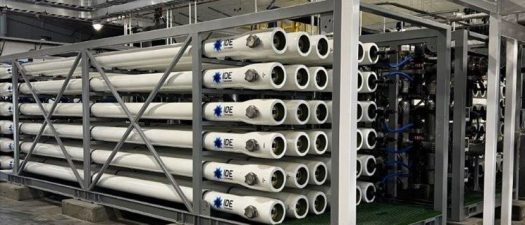Across industries, the move toward sustainability is no longer optional — it’s essential. .
Earth Day 2024 – How IDE is Making a Difference

Earth Day holds immense significance in highlighting the urgent need for environmental conservation and sustainable practices.
At IDE, we recognize our role in enhancing water cycle management and mitigating its environmental impact.
Is desalination a must?
Since the water cycle is changing dramatically, and the need for fresh water is growing, one should be aware that all solutions should be utilized together:
- Recycle and Reuse
- Desalination as the only ‘new water source’ available
- Renewal of aquifers and massive storage of water from recycling from the waste stream or desalination
Only through the comprehensive utilization of all these measures can we effectively address the significant risk of water scarcity, which poses dire consequences for our livelihoods, economies, and the environment
Desalination can be sustainable
While desalination is a critical element in managing the water supply of our countries and regions, there is a general concern about its impact on the environment, in terms of carbon emissions, brine management and chemicals.
IDE has been developing in the last years several technologies to overcome those challenges.
We recognize that the first step in reducing the environmental footprint of desalination is acknowledging and quantifying it. That’s why we’ve taken the lead by implementing the Lifecycle Assessment (LCA) model, becoming the first company to measure and quantify the carbon footprint of desalination plants. We see this as pivotal in setting the industry standard for sustainable desalination and advancing towards net-zero desalination.
But let’s backtrack for a moment…
What’s the problem with desalination?
It takes 3 to 4 kilowatt-hours (kWh) to produce a cubic meter (m³) of freshwater. Desalination is a substantial energy consumer, and as such, desalination plants are also responsible for substantial CO2 emissions.
If desalination could be powered by 100% renewable energy, we wouldn’t have a problem, but renewable energy has its limitation; energy is not generated consistently along the hours of the day and the seasons. Buying “green energy” from the grid is either mis-leading, or requires substantial storage that has its own environmental impact with the huge storage facilities which are required.
How IDE is making a difference
At IDE, we believe that for desalination to be truly sustainable, the desalination plant and the energy source must be in direct synergy. When we aim to reduce CO2 emissions, we must either produce water using real 100% renewable energy or focus on minimizing emissions and implementing carbon capture solutions.
Moreover, carbon emission reduction is only one element of environmental impact, and all should be addressed.
This is where IDE excels. IDE leads the way in developing sustainable desalination solutions, prioritizing the harmonious coexistence of efficient and affordable practices. We achieve this through the development and application of eco-friendly technologies and creative design strategies such as:
Self-Sustaining Chemical Use: We aim to make desalination plants self-sustaining in terms of chemical use by implementing seawater-based onsite chemical production. Some technologies are already implemented, and some are still under development by our R&D team.
Green Energy Solutions: IDE is leading the way in sustainable desalination with solutions like a patented green-steam technology, and combining solar energy within its desalination profile.
Smart Energy Consumption: IDE’s desalination plants operate with the lowest energy requirement.
Sustainable Brine Management: IDE implements mixing and dispersion models to safely discharge brine back into the sea, minimizing its environmental impact. IDE is also developing solutions to extract valuable salts from brine, turning it into an economically beneficial resource.
Is it theory or practice?
At IDE, we integrate these solutions into the facilities we design, build, and operate. For instance, in our latest project, Sorek II, the world’s first steam-driven SWRO plant incorporates several of our sustainable desalination technologies.
Thus, Sorek II stands as a testament to the feasibility of sustainable desalination. Through meticulous design and operation, IDE has reduced the plant’s carbon footprint by over 30% while simultaneously achieving one of the industry’s lowest water prices. This success demonstrates that cost-effective desalination and sustainability can go hand-in-hand.
Where do we go from here?
Large desalination plants emit more than 150,000 tons of CO2 per year. The mega-sized ones can easily reach 300,000 tons and more. When considering these figures, it becomes evident that sustainable desalination solutions must be a key criterion for every government, state, city, or developer when selecting technology and suppliers for desalinated water.
Carbon emissions carry significant long-term costs that must be accounted for in the short term. So, along with the cost of desalination, one should consider the cost of carbon emission impact, or the cost of carbon capture.
It is obvious that the cost of implementing desalination and carbon emissions solutions simultaneously is ultimately lower than addressing each project need separately. Therefore, desalination projects should not only consider commercially viability but also include environmental considerations.
Decision makers are expected to act and influence.
















